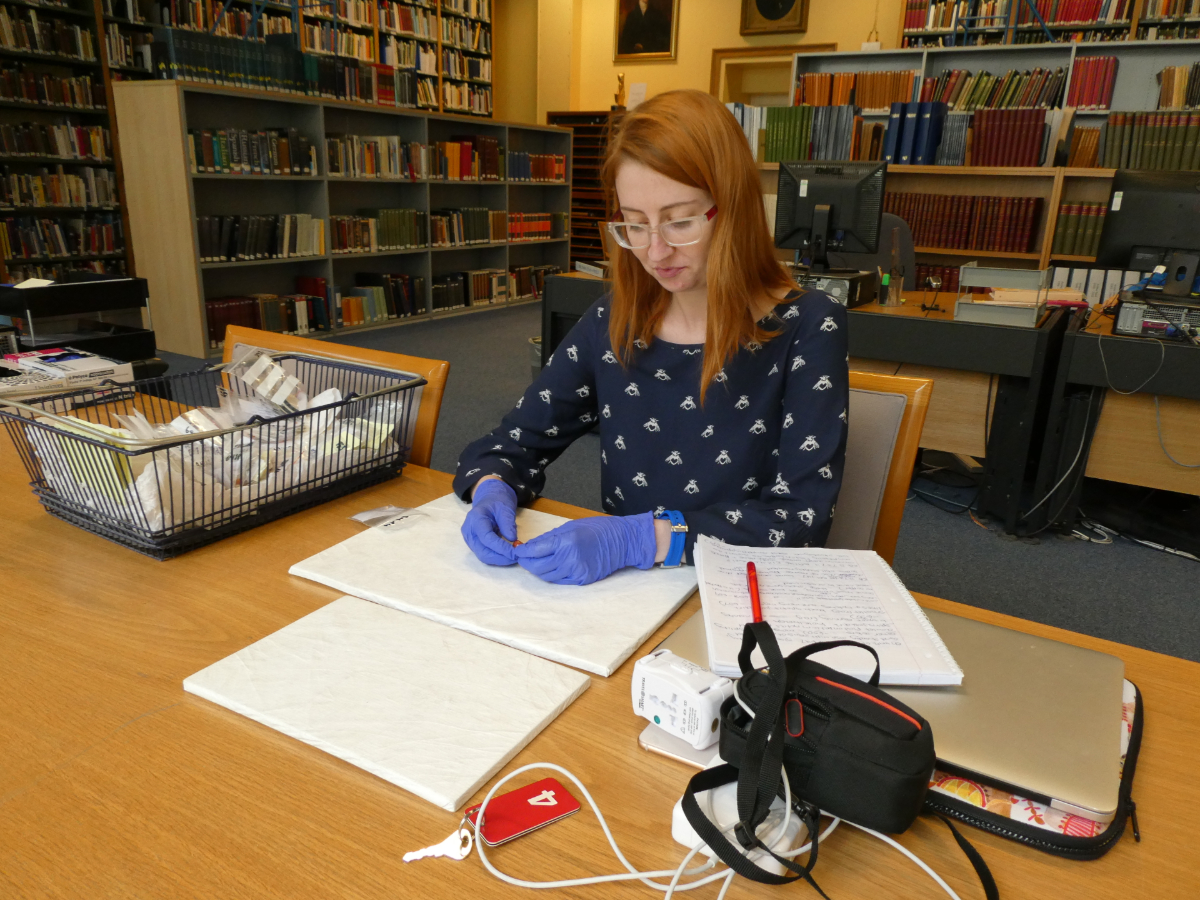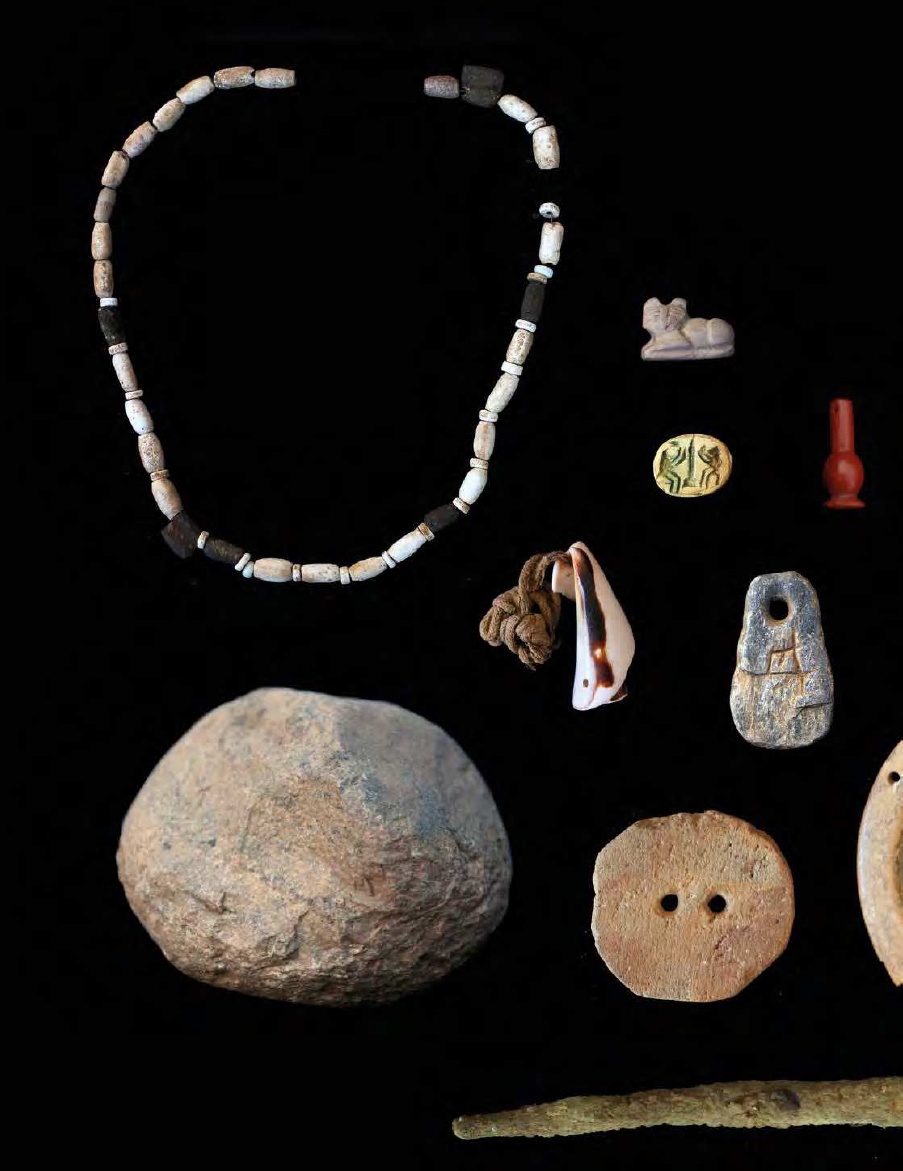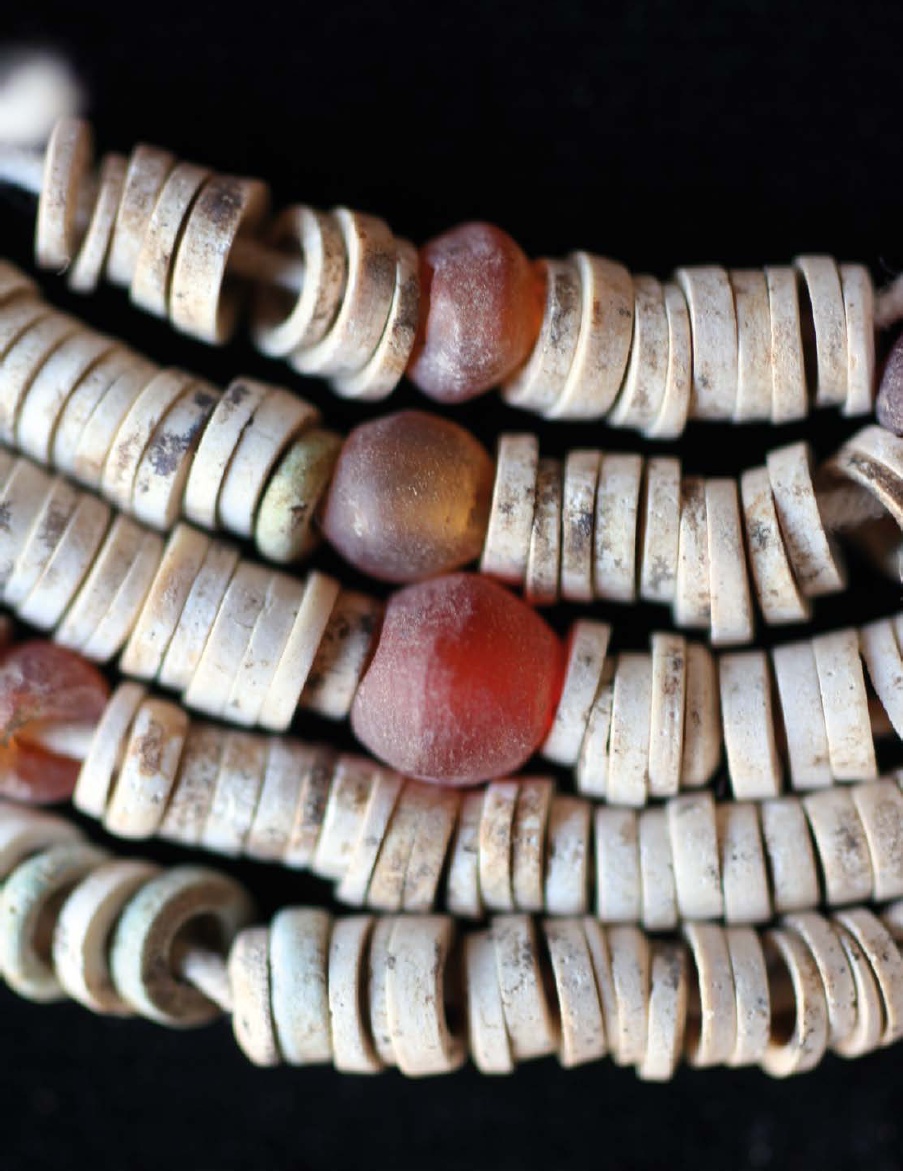https://penntoday.upenn.edu/news/through-gemstones-glimpse-ancient-egyptian-civilization
Through gemstones, a glimpse into ancient Egyptian civilization
Doctoral student Shelby Justl's research expands what we know about who controlled semiprecious stones like red jasper and carnelian, plus their cultural and economic significance.

On the second day of fieldwork in Abydos, Egypt, Penn doctoral student Shelby Justl stumbled upon something rare: an inscribed piece of ancient limestone called an ostracon. "You rarely find writing in Egyptian archaeology. Writing is either on papyrus, which decays easily, or on stone that fades over time," she explains. "I translated the text and determined this was a land-transfer document, a bill of sale of two arouras of land."
Another ostracon had previously surfaced in Abydos, on the site of an ancient town call Wah-Sut. The archaeological team that made the discovery knew the text mentioned gold, but Justl translated it in full. "It was a receipt," she says, "recording a delivery of raw gold, red jasper, and lapis lazuli, listing the exact quantities of each material."
Though the first inscription was intriguing, the second one hooked Justl. The receipt confirmed the arrival of large quantities of semiprecious stones coming from far away, but it also raised many questions. In ancient Egypt, how were the stones transported from mines to towns? Who was receiving them? And who controlled this semiprecious stone industry? Justl has spent the bulk of her Ph.D. research delving into these questions, and with guidance from her advisor, Penn archaeologist Joseph Wegner, and a trip to the British Museum last summer, she may finally have some answers.
Amara West at the British Museum
Justl didn't start her time in Penn's Department of Near Eastern Languages and Civilizations thinking she would study semiprecious stones. Her master's work had been on production of faience, a bright blue, glazed ceramic material. But fieldwork in Egypt in 2014 shifted her trajectory, and for the past few years she's focused on how ancient Egypt managed and processed materials like red jasper and carnelian.
It's well-documented that the Egyptians held these particular gems in high esteem, says Wegner, associate curator of the Penn Museum's Egyptian Section. "Certain amulets were supposed to be made from carnelian or jasper," he says, "to protect against evil spirits or for other religious reasons. They were also markers of social status. It wasn't easy to acquire jewelry in ancient times, and the people who owned these items were making statements about their wealth and social position. Many also envisioned taking them into the afterlife."
Red jasper is opaque, a dark reddish-brown, and the slightly translucent carnelian is orange-red. Given the stones' splendor, it's not hard to grasp their place of honor in such a society. From there, it's also not a far leap to understanding why large quantities are not often discovered. Unlike with pottery fragments, typically on the larger side archaeologically speaking, remnants of red jasper and carnelian are minuscule. Though they do get collected during excavations, the particulars around each discovery are often sparse.
To do the project she envisioned, Justl needed a large, well-labeled, provenanced collection of these semiprecious stones. Then she learned about an ongoing British Museum excavation at Amara West, a site in present-day Sudan known during ancient times as Kush. Amara West served as the capital of Kush during the reigns of Seti I and Ramses II, from 1290 to 1213 B.C.E. Here, these pharaohs installed an official called the deputy of Kush to act as the local authority.
In Amara West, "the museum had unearthed 78 semiprecious stone items," Justl says. "That's a large quantity. Most often, you'll only find a few. Sixty-seven of these stones contained data describing where they had been found." They hadn't yet been photographed or catalogued, so during the summer of 2018, Justl spent a month in London studying the materials.
Control by the pharaohs
Sifting through the British Museum's items—mostly jewelry like earrings and necklaces—she learned that more than 70% of the stones with recorded locations had been found in just three areas: the palace of the deputy of Kush; facilities behind his palace, used either for storage or production; and facilities behind a nearby temple, also used for storage or production.
This told Justl a great deal about the stones' import. "The storage facilities are positioned as close to the palace and to the temple as they could be," she says. "It suggests these are valuable items and indicates closely supervised management."
For Justl, it crystallized the idea that processing and distribution of semiprecious stones happened mostly in capital cities controlled by the pharaoh and government, where the stones could be protected. Archaeological reports from Amara West dating back as early as 1938 strengthened the theory. Elsewhere, tomb scenes confirmed that part of the tribute the deputy of Kush sent to the pharaoh in the Egyptian capital included valuable stones like carnelian and jasper.
What Justl doesn't yet know, and what may never become clear, is the degree to which ordinary citizens had access to semiprecious stones, given the evidence pointing to their place in the lives of society's elite. Difficulties addressing this result partially from lack of access to pertinent ancient sites. In Abydos, for example, the modern town lies atop the ancient one. Beyond that, the historical record in general is incomplete, primarily chronicling activities of the pharaoh, the government, and the elite, with much less about common citizens.
"I'm still pursuing this question," Justl says. "Where Amara West has a concentration of semiprecious stones within the temple and palace economies, at some other sites, it could be a household industry." This may not, however, indicate that workers had better access to the gems, she adds, noting that "it probably means the stones were still controlled and distributed by the pharaoh and temples, with people simply working at workshops in their homes."
Despite the unanswered questions, this research brings into greater focus a historical period important to a modern picture of what ancient civilization was like. "It's helping us understand how ancient Egypt worked as a society," Wegner says, "the economic and administrative side, the complexity of the culture."
Funding for this work came from the 2018 Penn Museum Summer Research and Field Work Funds.
Shelby Justl is an eighth-year doctoral student in the Department of Near Eastern Languages and Civilizations in the School of Arts and Sciences at the University of Pennsylvania.
Joseph Wegner is an associate professor of Egyptian archaeology in the Department of Near Eastern Languages and Civilizations in the School of Arts and Sciences and associate curator at the Penn Museum at the University of Pennsylvania.
-- Sent from my Linux system.


No comments:
Post a Comment